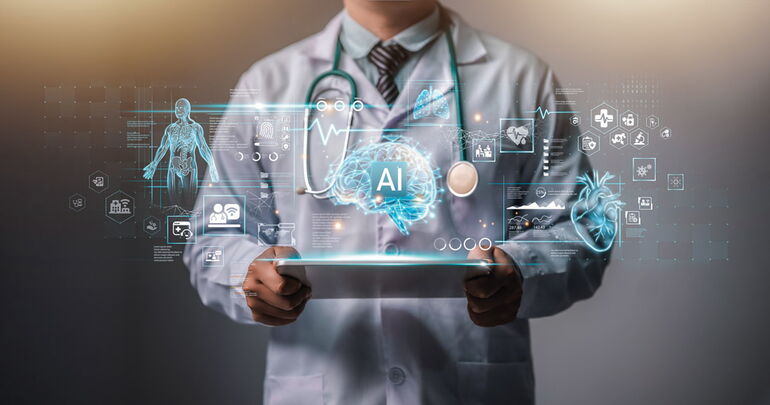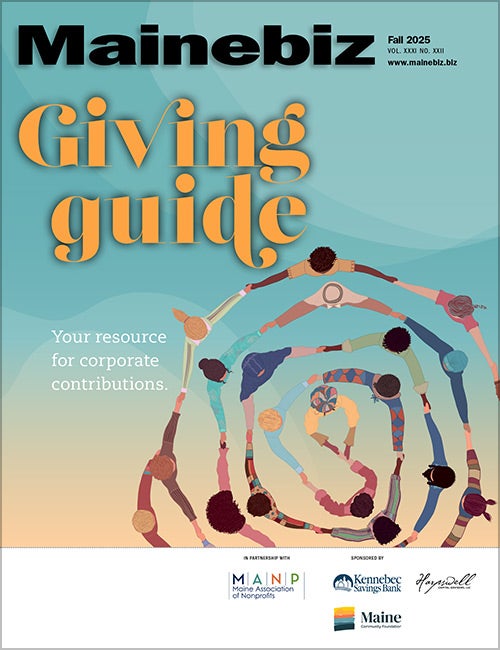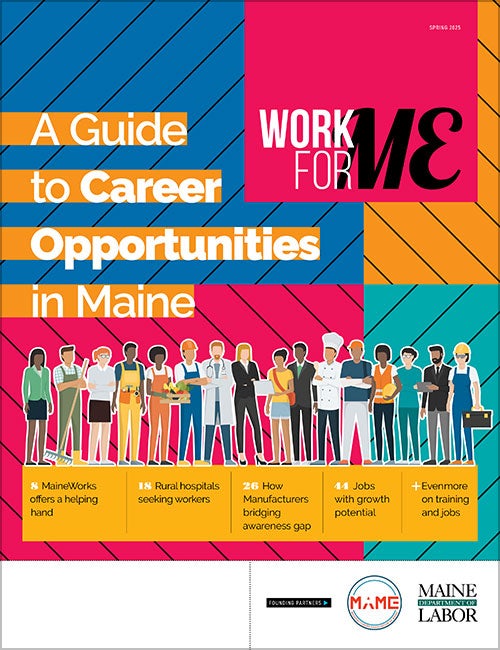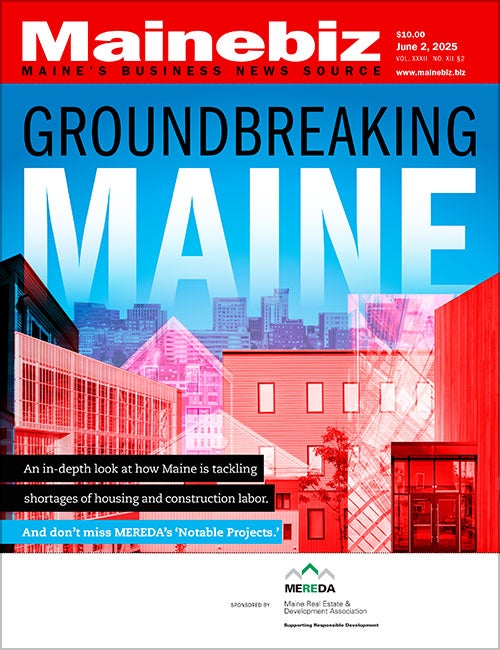
AI is a resource in health care: Shifting the focus back to patient care
 Adobe Stock
Adobe Stock
Artificial intelligence is often described as the next Industrial Revolution, with its full impact still emerging. Industries across the globe are adopting this transformative technology, and health care is no exception.
From transcribing and analyzing data to assisting with diagnoses, AI is already improving patient care and easing clinician burnout. Though still in its early stages, AI in health care holds the potential to unlock a future of unprecedented possibilities.
AI won’t replace bedside manner

C. Matt Graham, associate professor of information systems and security management at the Maine Business School at the University of Maine, made local headlines with the publication of his study, “Artificial intelligence vs human clinicians: a comparative analysis of complex medical query handling across the USA and Australia.”
Graham sifted through 7,165 medical queries from the data set, MEDIQA-QA, and compared those AI-generated responses against responses from human clinicians in the U.S. and Australia. The goal in his comparative analysis was to assess the responses’ accuracy, professionalism, tone and overall usefulness to patients.
According to Graham, the results showed that AI responses were generally more accurate, consistent and professional than those from human clinicians. AI excelled at delivering clear and detailed answers with the potential to increase efficiency, reduce costs and improve patient satisfaction.
But here’s the catch: the AI responses often lacked emotional depth and empathy — or what is often referred to as bedside manner.
Additionally, the AI’s reliability depended heavily on the quality of the training data human clinicians provided.
“The findings suggest that AI has real potential to enhance health care delivery, especially in reducing clinician workload, speeding up patient communication and improving consistency, and this can also help in clinician burnout,” Graham says.
“But AI should not be reviewed as a replacement for human expertise. Instead, the best model is a collaborative one, where AI can handle routine factual queries, and where clinicians provide judgment, empathy and trust.”
AI’s strength lies in processing massive amounts of information and finding recurring patterns. However, the technology is only as good as the quality of data sets that feed it. This makes it susceptible to biases or blind spots if the data it is built on does not include the full diversity of the population.
Work is being done to integrate emotional intelligence into AI systems. While AI technology rapidly unfurls, Graham’s work emphasizes that AI is a tool, not a replacement for human health care providers.
“Automated tasks are going to reduce the workload for clinicians, reduce the threat of burnout for clinicians, and another benefit that my findings found is that AI is going to boost efficiency in health care, but it’s not going to replace human touch. The future of medicine really isn’t about AI versus clinicians; it’s about AI working alongside clinicians.”

Tech brings humanity back to medicine
Northern Light Health is gradually integrating artificial intelligence into primary care through its pilot program with AI Scribe. The transcription software records provider-patient conversations and generates editable notes for clinicians.
The program began with 30 providers, but after strong results, Northern Light expanded it in June 2025 to make AI Scribe available to all its primary care providers. Currently, 85 of about 180 providers (not including Mayo Hospital) use the software. After 120 days of adoption, participating providers complete 93% of their notes with AI Scribe.

Dr. Kathryn Rensenbrink, a family medicine provider at Northern Light Primary Care in Ellsworth, joined the initial pilot and was “blown away” by its effectiveness.
“It’s reduced my documentation time; I’m more on time with my schedule. I’m leaving earlier, and I’m also having better eye-to-eye contact with patients, because I’m not trying to document while I’m talking to them,” she says.
Reducing burnout was a key motivation behind the pilot.
Rensenbrink says she did not realize the extent of her mental fatigue until AI Scribe eased the burden.
“Just that relief of the brain, being able to really just focus on my patients, has been a really big benefit,” she says.
While benefits include higher quality interactions and less strain on providers, challenges remain. Transcripts must be checked for errors, the software can mishear small talk as medical information, and providers must verbalize their actions, so they are captured accurately.
Despite these hurdles, Rensenbrink is encouraged by the real-world impact. Instead of focusing on note-taking, clinicians can return to the work of healing. Northern Light has now made AI Scribe available to nurse practitioners, advanced practice practitioners, associates, and physicians in the primary care field.
The future of health care is now
AI is rapidly transforming health care, but its fast-paced innovation must be matched with thoughtful implementation and strong cybersecurity safeguards to protect patient privacy and medical records. At the same time, technology is helping address a critical challenge: growing demand for medical services amid a shortage of providers.

MaineHealth is exploring new ways to use technology to support providers and patients. “We look to possible solutions for that dilemma, using technology to allow our clinical care providers, our administrative staff, essentially everyone within our organization to have tools that will allow them to be more efficient, to work smarter and in some ways work better,” Dr. Daniel Nigrin, chief information officer at MaineHealth, says about using AI to help workforce demands in hospitals.
Over the next year, MaineHealth will pilot AI tools such as assistive interpretations of imaging studies, ambient documentation, insurance claims data organization, and automation within the electronic health record (EHR).
This fall, two medical surgical units will test whether technology can help nurses with flow sheet documentation, including vital signs, patient intake and output, and wound measurements. Currently entered manually, these metrics could instead be captured through a mobile listening device to streamline the process.
AI is also improving diabetes care. Routine eye screenings, once requiring a separate ophthalmology visit, can now be performed in primary care offices using an AI backed camera that interprets retina images on site. Another pilot program uses cameras, with patient consent, to monitor individuals at risk of falling. A remote sitter can observe multiple patients while AI sends alerts if someone appears ready to get out of bed, triggering an audio call until help arrives.
MaineHealth emphasizes that education and careful review are central to any rollout. The system recently launched an AI 101 class for its community of 24,000 people. “We really scrutinize all of these technology platforms before we deploy them, first and foremost, from a cybersecurity point,” Nigrin says.

The ultimate goal is to improve patient care while addressing burnout that drives providers from the field.
“Objectively, we think this is going to yield incredible benefits for us in some of the burnout that we’re experiencing, and frankly, allow those clinicians to get back to why they signed up for medicine in the first place, which is to provide care and not to be bookkeepers typing things into a computer,” Nigrin says.










0 Comments